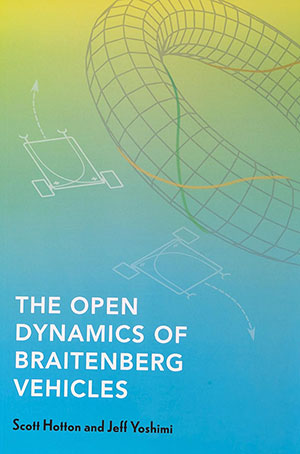
A Braitenberg vehicle travels the realms of science. Sometimes it’s real, sometimes it’s not. Either way, its simple designs help researchers see how an agent’s interaction with its environment can produce complex, seemingly intelligent behavior such as love, hate and desire. Such ideas are the backbones of artificial intelligence, cognitive science and robotics.
Forty years after Valentino Braitenberg dreamed up these little machines, UC Merced philosophy Professor Jeff Yoshimi and research scientist Scott Hotton have co-authored a book that confirms and expands on the Italian neuroscientist’s ideas.
“The Open Dynamics of Braitenberg Vehicles” (The MIT Press), published in June, is a book 10 years in the making. It’s the result of a longtime collaboration between Yoshimi and Hatton, whom the former describes as a “beautiful mind” mathematician. The book expands on Braitenberg’s brief 1984 introduction to the devices — a slim 32 pages — and unpacks their possibilities.
“We did the math and confirmed and expanded his ideas, showing in 250 pages all the possible meandering and spiraling and other patterns these vehicles can produce, in rigorous detail,” said Yoshimi, a member of the Department of Cognitive and Information Sciences .
The classic Braitenberg vehicle has sensors that detect things such as light, temperature and sound, and motors that are connected to the sensors in a certain way. This creates rules of behavior such as “aggression” (i.e., moving faster toward a light source, as if it were attacking) or “fear” (moving away from the light, as if it were avoiding it).
The book’s title refers to open dynamic systems, which interact with and are affected by their environment. Braitenberg vehicles fit the description because they aren’t pre-programmed but behave based on their environment and internal setup.
Yoshimi and Hotton also delve into embodied cognitive science — the idea that cognition isn’t just something that happens in the mind, but also stems from the interactions between an organism’s body, its environment and its actions in that environment.
This exploration in the book taps into Yoshimi’s expertise in philosophy. It follows theories that challenge traditional ideas of mind and intelligence, suggesting intelligent behavior can emerge from simple interactions.






